SUNDAY, APRIL 3, LOOKS TO BE THE BEST DAY FOR THE BLOOMS. WARMER WEATHER AND SUNNY CONDITIONS WILL PROVIDE THE OPTIMAL CONDITIONS FOR BLOOMING.
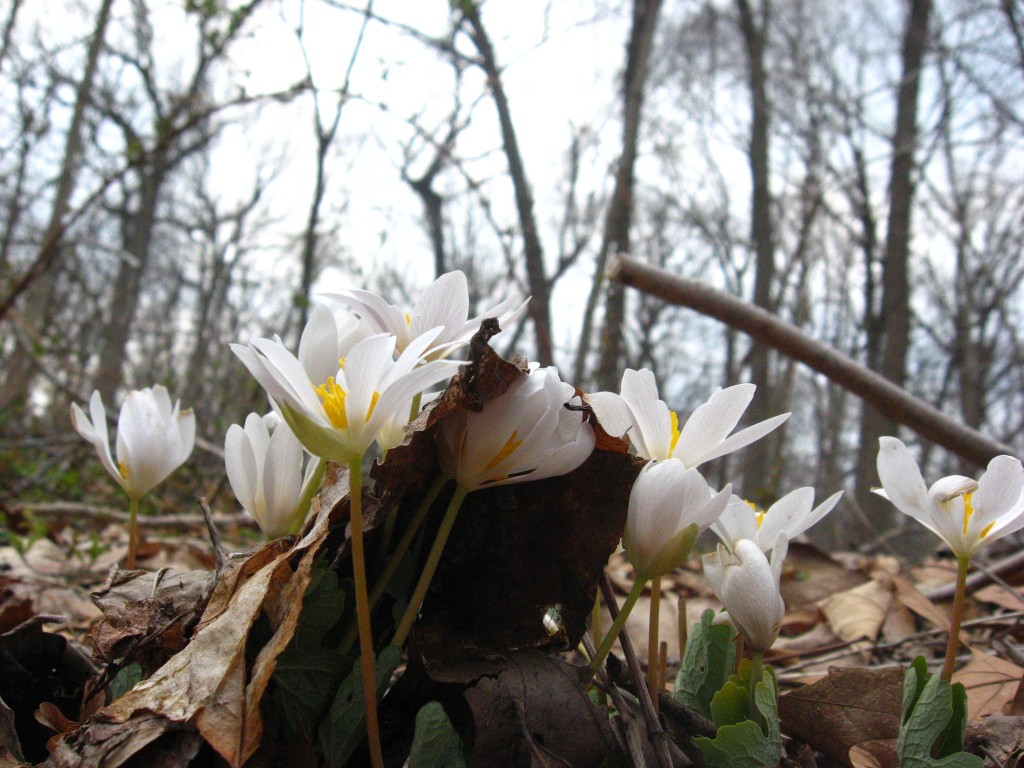
The leaf litter often creates a dense matte that provides a challenge for the bloodroot flowers to emerge. Â The wet weather of early spring sometimes allows the leaves to loosen up, so the blooroot may penetrate through more easily.
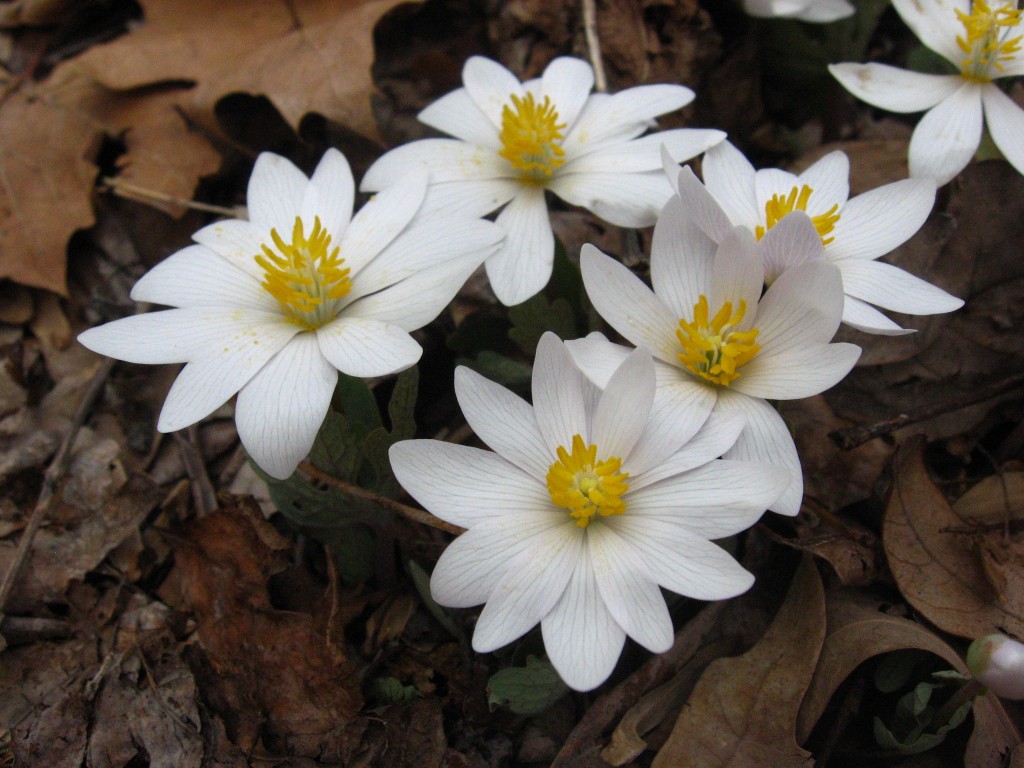
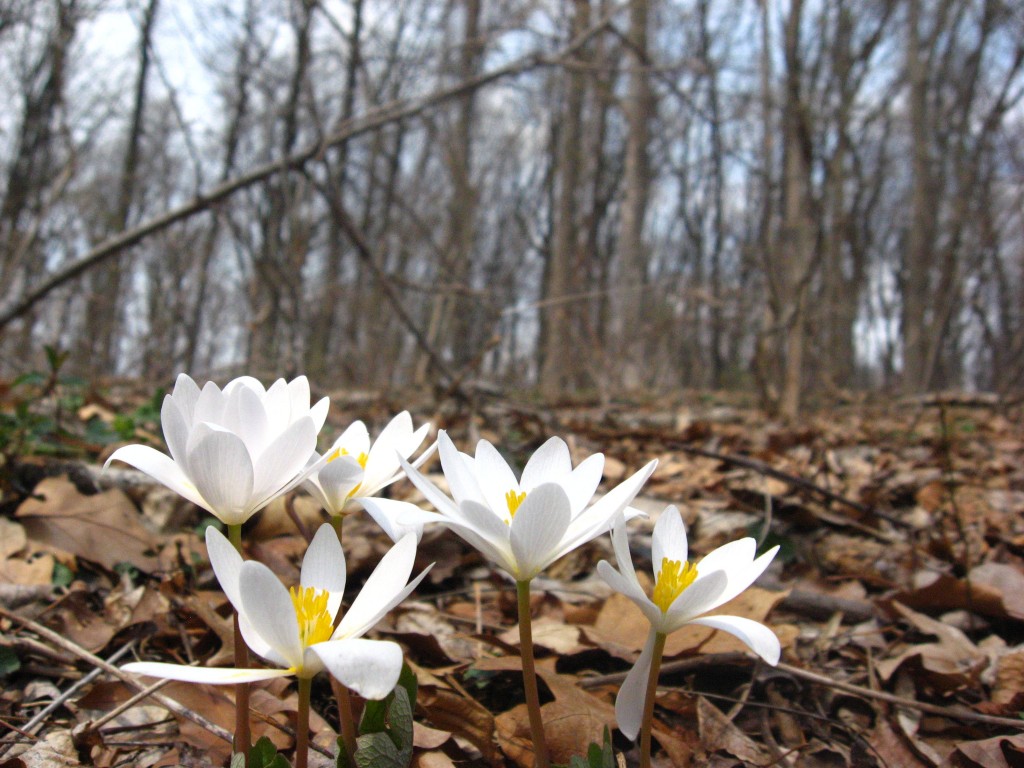
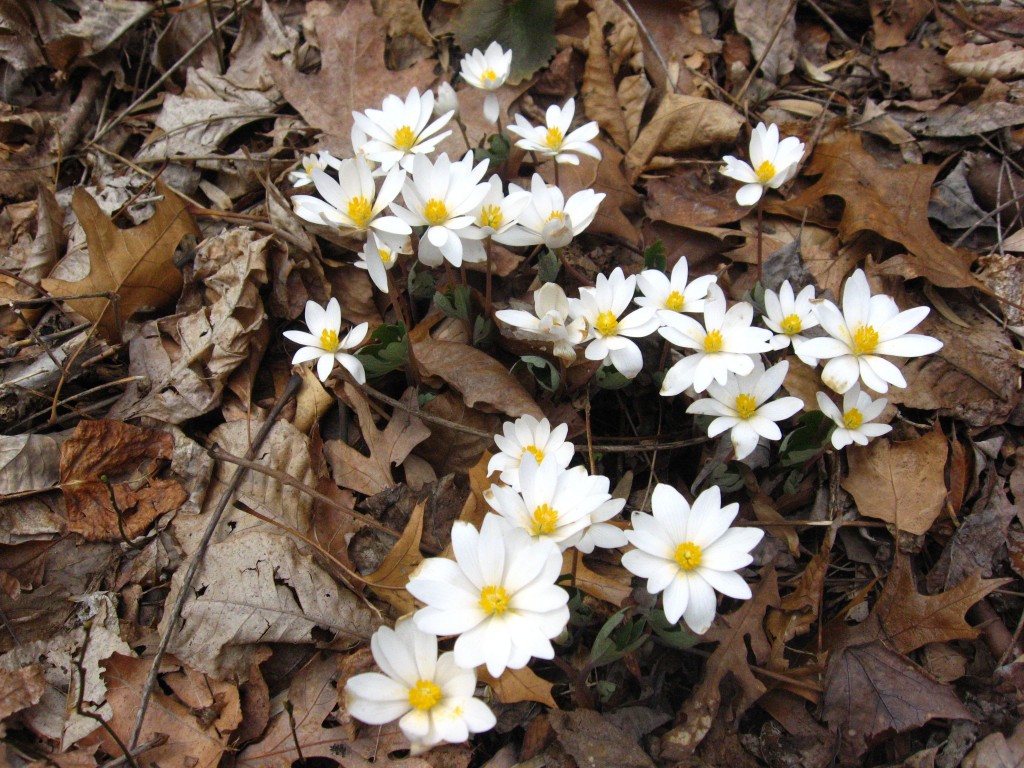
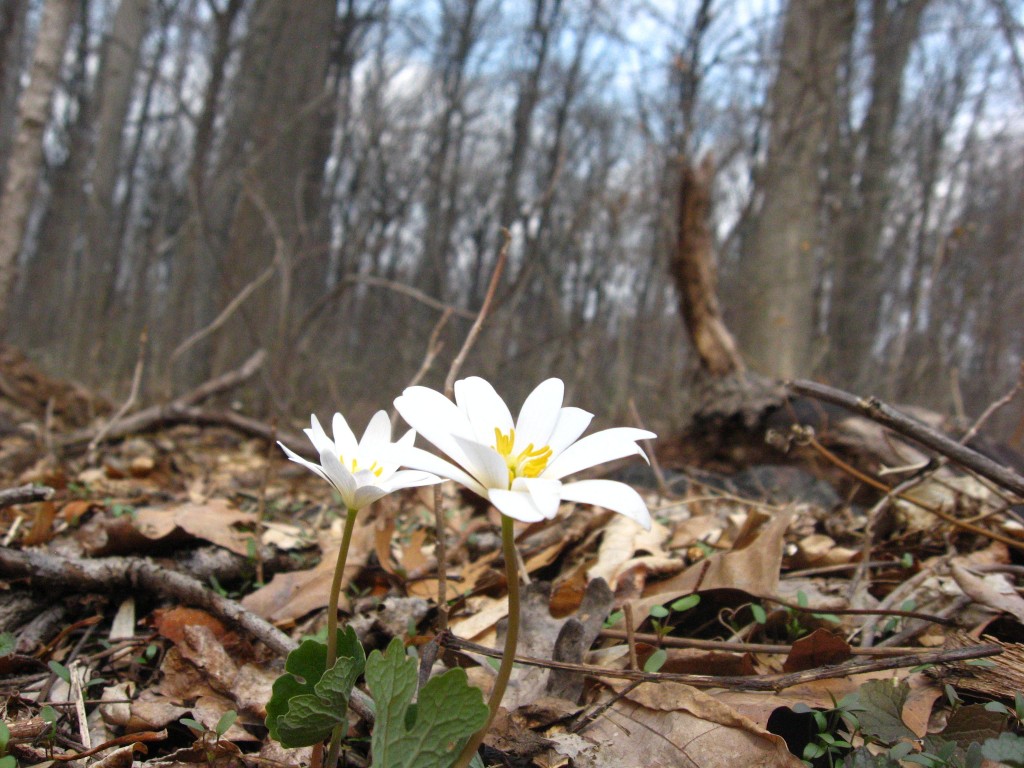
The magnificent stands of Bloodroot depicted above used to be located next to thickets of Multi-flora rose and were covered with Japanese honeysuckle, which we removed 3 years ago. There were only a few flowers to be seen at this time, the colonies have expanded dramatically since the removal of the invasive plants.
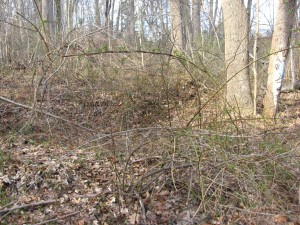
A few hours removing Multiflora rose. Â After a morning of bloodroot festivities, we were reminded that we need to stay on top of the removal of the invasive plants that threaten the bloodroot. This thicket reminded us of the previous condition of the area where the photographs in the opening sequence of this post were taken. Bloodroot is growing in the vicinity of this thicket of Rosa multiflora and Lonicera japonica. What a better way to spend the morning enjoying the blooming flowers of Sanguinaria canadensis, and the afternoon working to enhance and protect the same ecosytem that is under threat only 100 feet away?
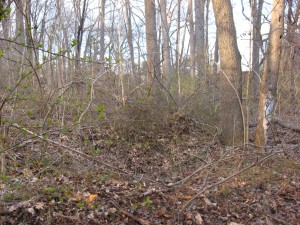
It seems that wherever Multiflora rose grows, nothing else does.
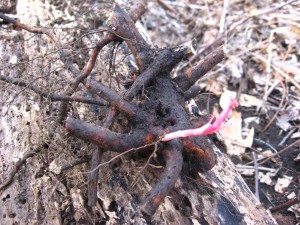
This is a detail of the Multiflora rose root system. Â Even though this plant is an exotic invasive, we can still appreciate its botanical characteristics. Â Somewhere in the world, this is a native plant that is contributing to the ecosystem and provides food for the birds and insects of that ecosystem. Â Here in Morris Park, this is unfortunately a detrimental plant that has a negative impact on the ecosystem. Â It is classified as a noxious weed by the State of Pennsylvania.
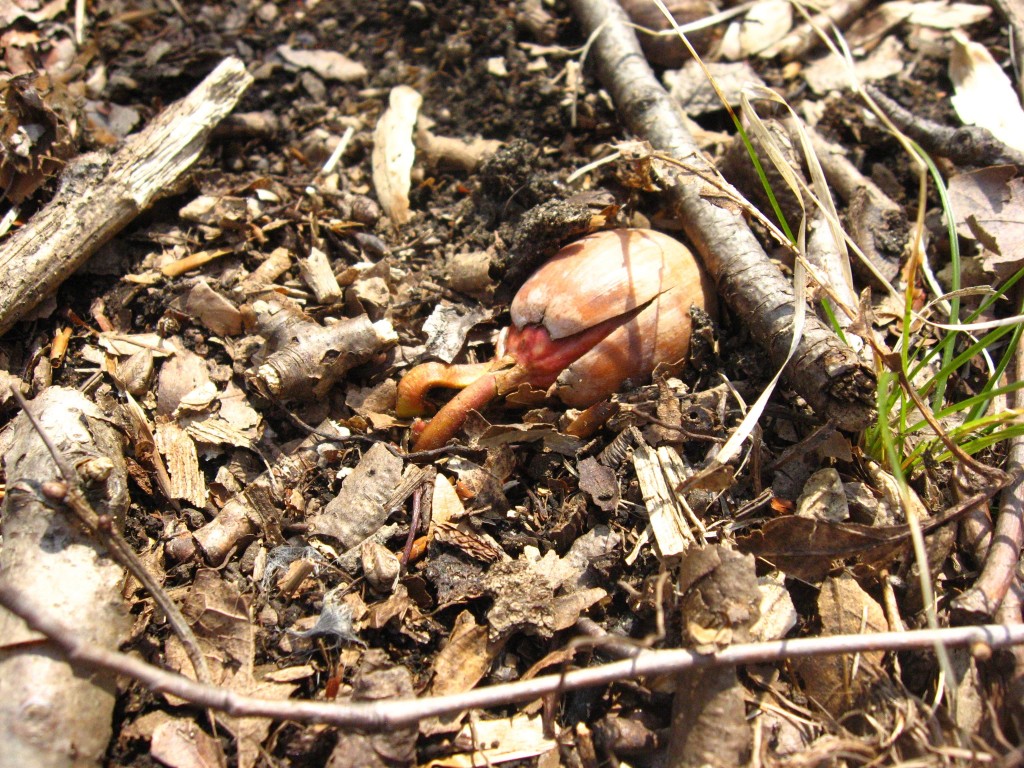
We found this oak seed this morning. Â A great symbol of hope for the future of Morris Park. Â An oak tree provides food and habitat for hundreds of species of insects and birds.
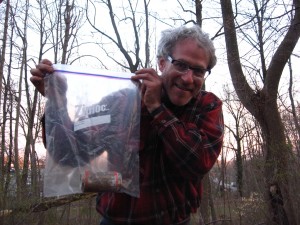
Last but not least, we discovered an unopened can of beer in a party dump, near the area we worked on today. Is it drinkable? Â It looks to be 10 to 15 years old. Â It is going to our museum of discarded objects from Morris Park.


